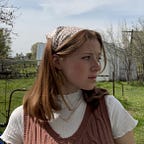The beauty of being broken
There is a Japanese art called, “Kintsugi.” It is used when mending a broken piece of pottery. Instead of gluing it together like many would, they mix lacquer with gold powder/dust. This causes the broken pieces to beautifully connect back together with contrasting gold glitter outlining each section.
While there are a lot of cheesy quotes and poetry out there about how being broken is okay, and that you can get better, the Kintsugi has always stood out to me for one specific reason. This art form does not use clear glue or lacquer or simply throws the pottery away. They use gold, a color that stands out against almost all others. Instead of trying to hide the imperfections, they embrace them; which ultimately makes the piece even lovelier than it was, to begin with.
I think about this concept a lot when it comes to things I go through. When something goes wrong, my first reaction is to be sad, or upset. “How could this happen to me?” “What did I do wrong?” “It can never be the same again.” Despite how this sounds in retrospect, this is a completely normal reaction. Cause and effect. When life doesn’t go the way we planned, it hurts. And it has become so ingrained in our heads and habits to believe that when something goes wrong, it’s the end. We throw it out, give it up, or never try again. These thoughts that we are so conditioned with are the root of our problems, not the mistake itself.
Like this pottery, we can break. But I like to remember a line from Marissa Meyers in the Lunar Chronicles.
“Broken isn’t the same as unfixable.”
We begin life with reactions. If your child spills a drink, you get mad. If the neighbor mows their lawn at 5 in the morning, you get cranky. If you lose a loved one, you get distant. Having reactions are normal, but it’s up to us on deciding what reaction we want to portray. Because now this child you’ve yelled at is going to be scared to make a mistake again. Because now you’ll associate your neighbor with someone who has no regard for others, even though you’ve never met them. Because now you fear ever losing someone again.
The kintsugi embraces these reactions. It shows that it’s okay to have them, to express yourself in all the best ways possible. However, we don’t want to glaze them over with a fresh layer of paint or throw them away, burdened by your time being wasted in attempting to create something beautiful.
Embrace your mistakes. Let them be a part of who you are because when you learn from them and become that better person, it is them that will make you more beautiful.
